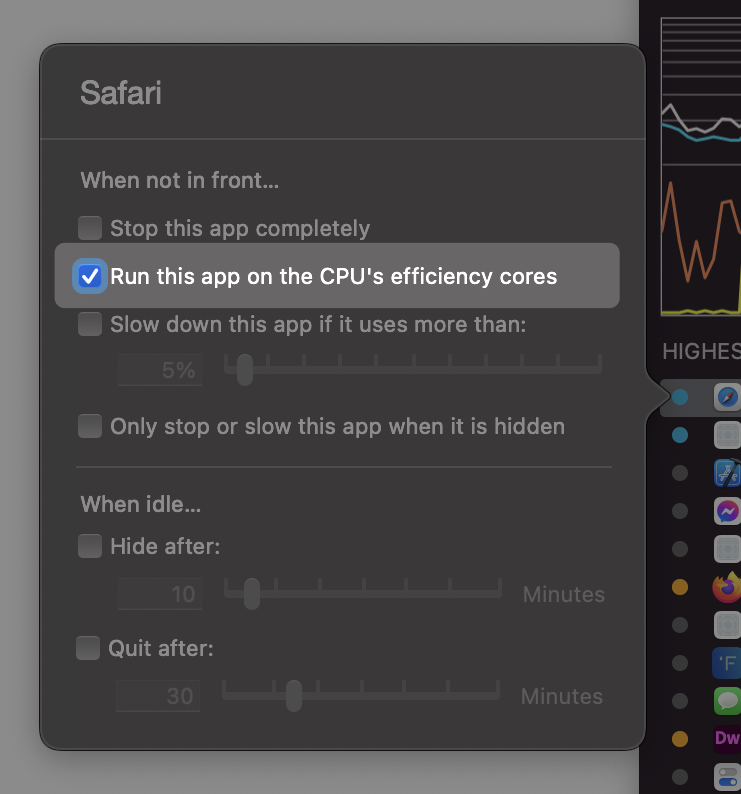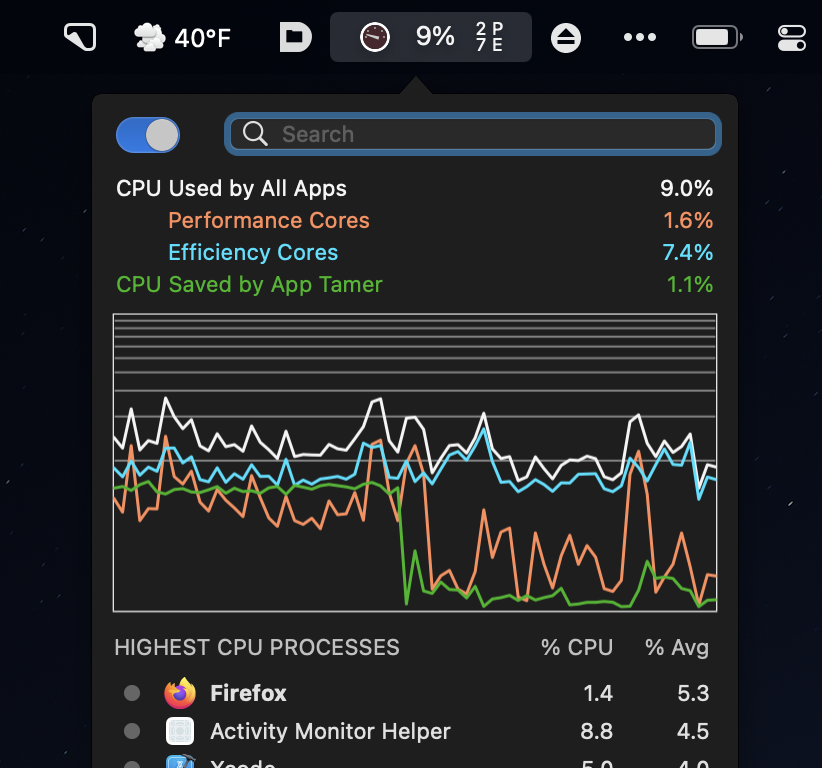Version 2.7.1 of App Tamer is now available, addressing a number of issues and also providing localized online help for French-speaking users.
Compatibility has been improved with Bartender and Steam, and a number of user interface problems and window placement issues have been fixed. User interface glitches on older versions of macOS have also been eliminated.
There’s been a lot of interest in App Tamer’s new capability of running apps on the efficiency cores of M1 Macs, including requests to do so even when the app is frontmost. You can do that by holding down the Option key while clicking on an app in App Tamer’s process list – an extra “Also slow this app when it’s in front” checkbox will appear. Just turn on that checkbox (now that version 2.7.1 properly enables it).
Full release notes and download links are on the App Tamer release page.



